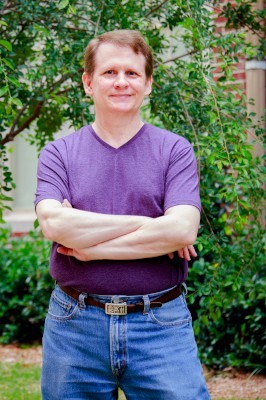Mind: In my current research, the architecture of the human mind is being understood largely on the basis of interpretation of published reports of subjective experience, synthesized together with an exclusive molecular data set provided by the National Institute of Mental Health Psychoactive Drug Screening Program (NIMH-PDSP). Mental illnesses are understood through the writings of individuals who have suffered the illness (e.g. Carol North on schizophrenia, Donna Williams on autism, Kay Redfield Jamison on bipolar disorder), and psychoactive drugs are understood through the writings of those who have experienced them (e.g. Aldous Huxley on mescaline). The NIMH-PDSP assayed twenty-five carefully selected psychoactive drugs at my request against over fifty receptors, transporters and ion channels, and this data has been combined with data for ten addition drugs (largely assayed by NIMH-PDSP) gathered from the literature. The synthesis of the subjective data together with the molecular data has made it possible to determine the mental effects mediated by twenty-two receptors in twelve groups. This is a new body of knowledge which has revealed a portion of the chemical architecture of the human mind. I am now in the process of understanding how variation in the proportioning of these various elements in individual minds, contributes to the peculiarities of the personality, and in extreme variations or interactions, to a variety of mental disorders: schizophrenia, autism, depression, anxiety, obsessive compulsive disorder, mental retardation, learning disorders, bipolar disorder, addiction, disorders of rage, and post-traumatic stress disorder. Have a look at some of my publications on the human mind.
Artificial Life: From 1990 to 2001, I conducted research on digital evolution, which means exploring what happens when evolution by natural selection is embedded in the medium of digital computation. This work began with the creation of Tierra, a system in which self-replicating machine code programs evolved by natural selection. This work received considerable media attention. In 2000, I implemented a new system calledVirtual Life, which is a derivative of Evolved Virtual Creatures originally created by Karl Sims. In June of 2003 I began collaboration with Ivan Tanev to develop the VirtualLife project in new directions. This kind of work is known to many people as Artificial Life. I have some thoughts on evolvability. Have a look at some of my publications on artificial life.
Tropical Biology: From 1974 to 1989, I was a tropical biologist who studied the evolution and ecology of a variety of organisms inhabiting rain forests. My work focused primarily on the foraging behavior of vines in the family Araceae; however, I also studied ants, butterflies, and beetles. Most of my field work was conducted in Costa Rica. After 1982, I worked principally at Finca El Bejuco biological station located in the lowland rain forests of northern Costa Rica, which I built, and own and operate. I was deeply involved in rain forest conservation in Costa Rica. Have a look at some of my publications on tropical biology.


